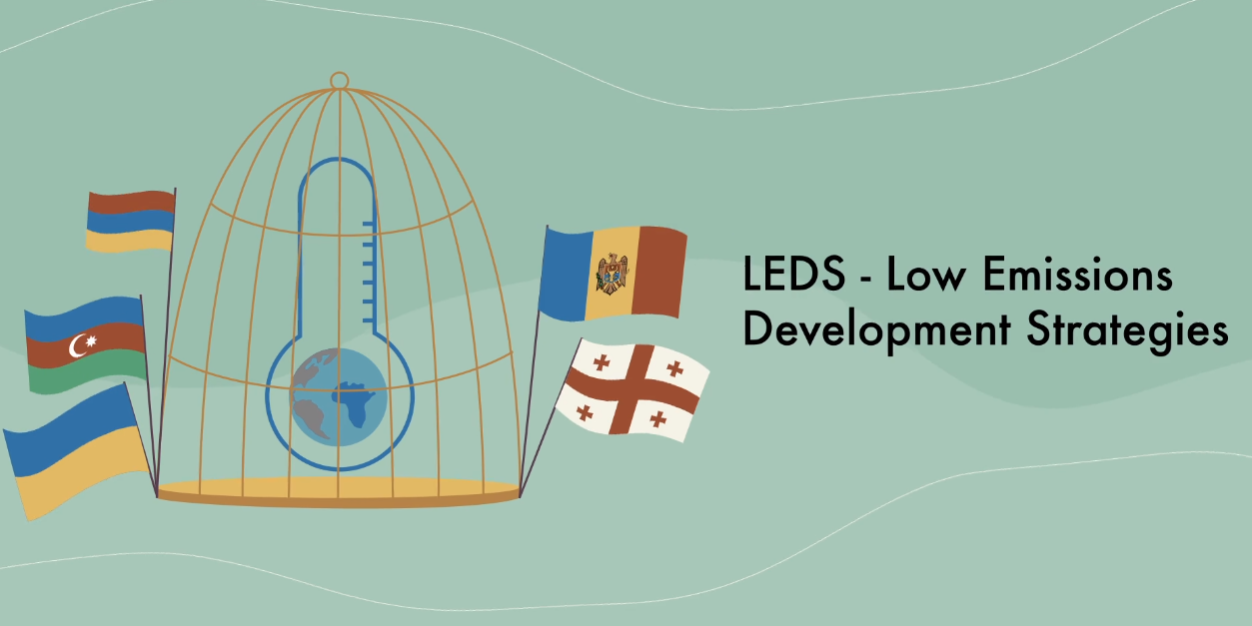Under the Paris Agreement, countries develop climate pledges – Nationally Determined Contributions (NDC) – to help tackle global warming. Low Emissions Development Strategies (LEDS) comes as the next step in form of scenarios of how climate neutrality can be achieved. Climate neutrality for the EU is set by 2050, preserved in the law – European Climate Law – to be achieved through the ‘European Green Deal’. EU priorities support EaP countries to mitigate climate change and advance on their path toward carbon neutrality.
EU4Climate promotes EU knowledge and experience in developing and implementing long-term climate policies and assists Eastern Partners (Armenia, Azerbaijan, Georgia, Moldova and Ukraine[1]) to develop Low-Emissions Development Strategies (LEDS) for a resource-efficient, low emission, and climate-resilient economy. EU4Climate assisted Armenia, Azerbaijan and Georgia in preparing their LEDS. Moldova was supported in developing the updated LEDS 2030. Ukraine had already prepared its long-term strategy already in 2017.
LEDS in Eastern Partnership countries focus on climate mitigation, covering the whole geographic area, all economic sectors and including all GHGs (i.e. CO2, N2O, CH4 and F-gases). Armenia and Georgia state that climate neutrality is the goal for 2050. Ukraine’s ambition is to achieve climate neutrality by 2060.
Draft climate laws are developed for Armenia, Moldova, Ukraine. Climate budget tagging studies to identify national and international sources of finance to climate action are prepared for Armenia, Georgia.
The low emissions development strategies promote the EU green agenda in the Eastern Partnership region. Establishing mid-century goals for curbing greenhouse gas emissions in the Eastern Partnership countries contributes to reaching the ultimate goal of the Paris Agreement to keep global warming within 1.5 degrees.
[1] It should be noted that all information for Ukraine is referring to the strategic documents developed before the war started by Russia, and therefore would need to be updated with a focus on post-war reconstruction needs, once the situation allows.
Check our video:



